
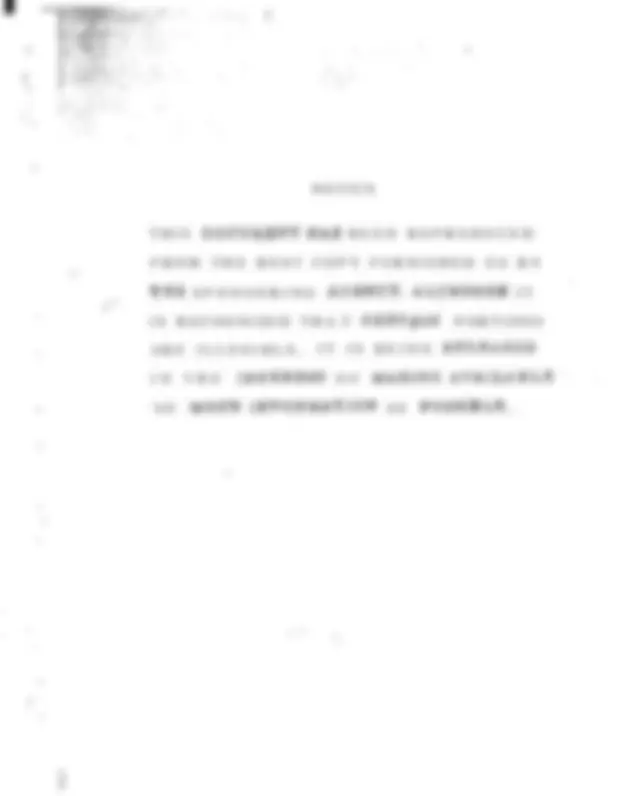

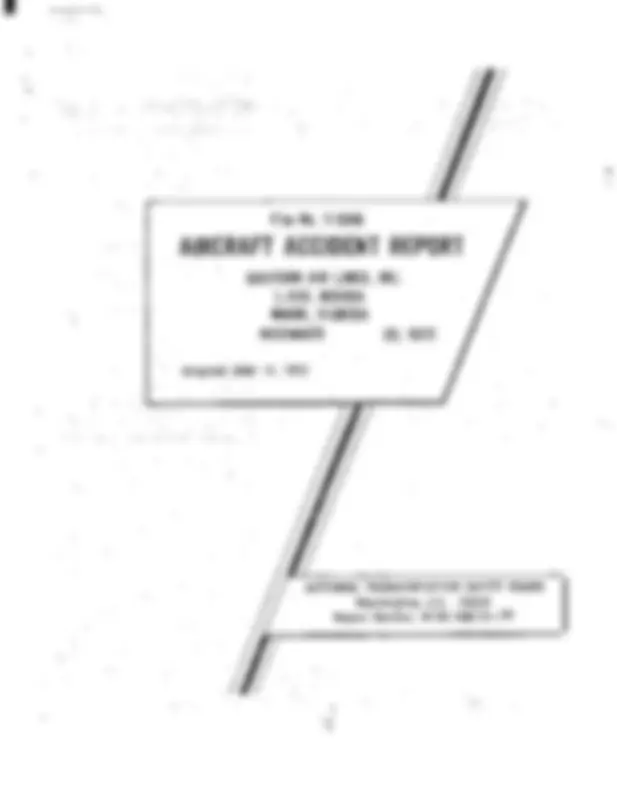

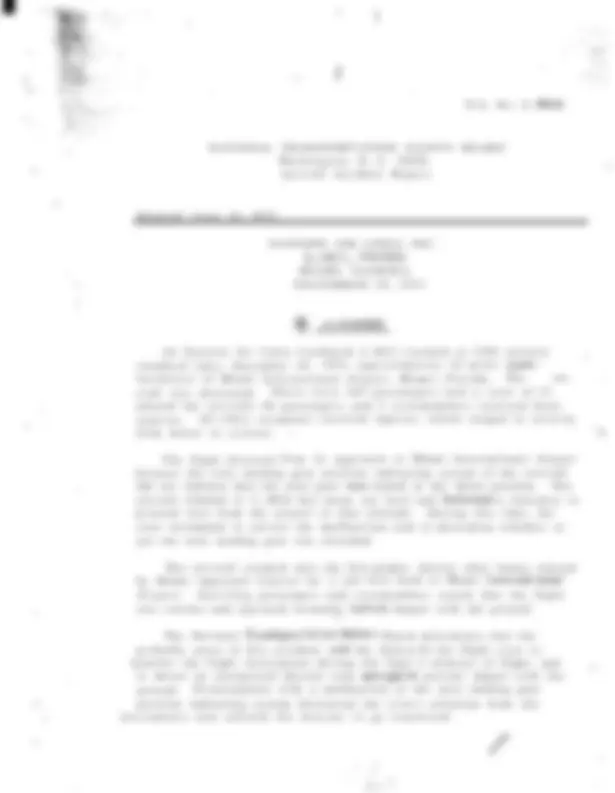
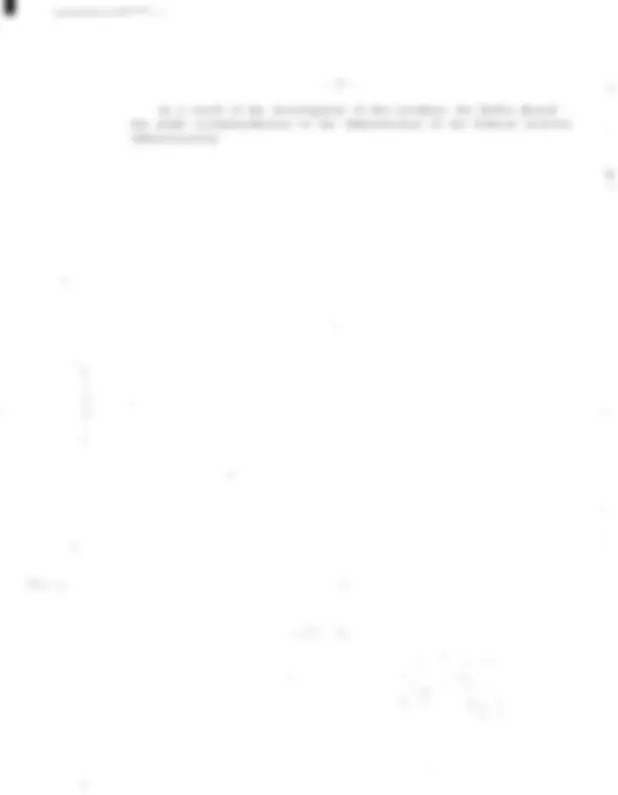
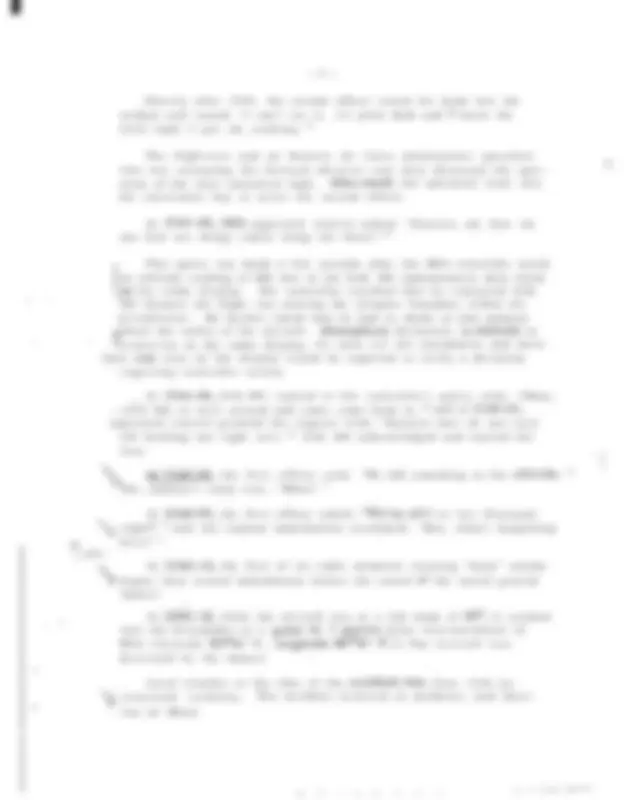
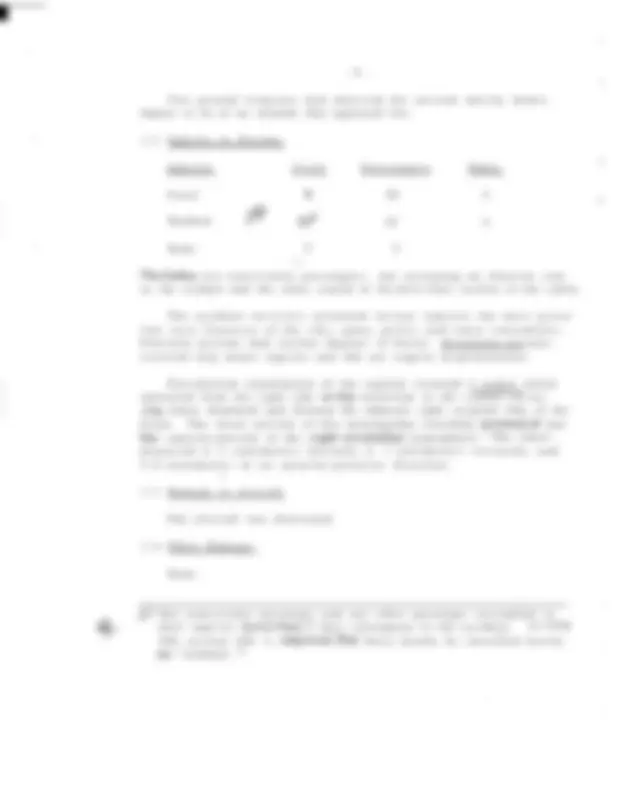
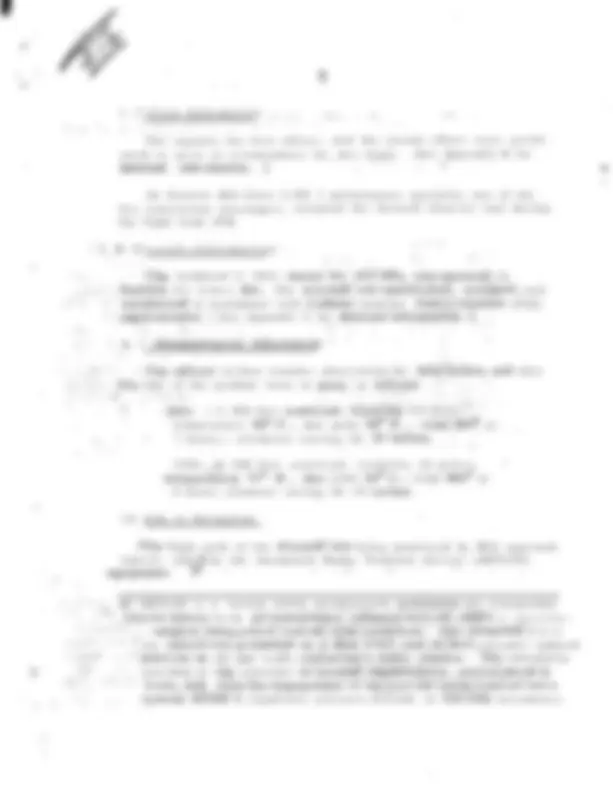
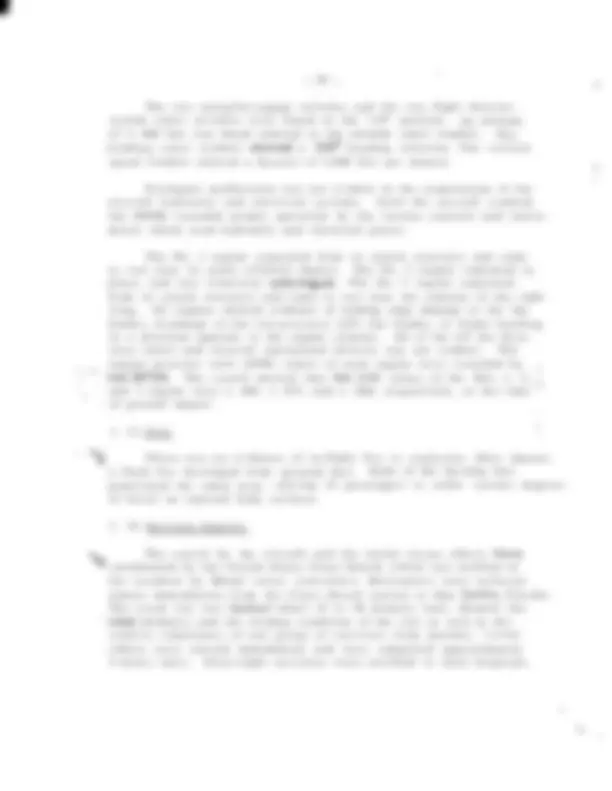
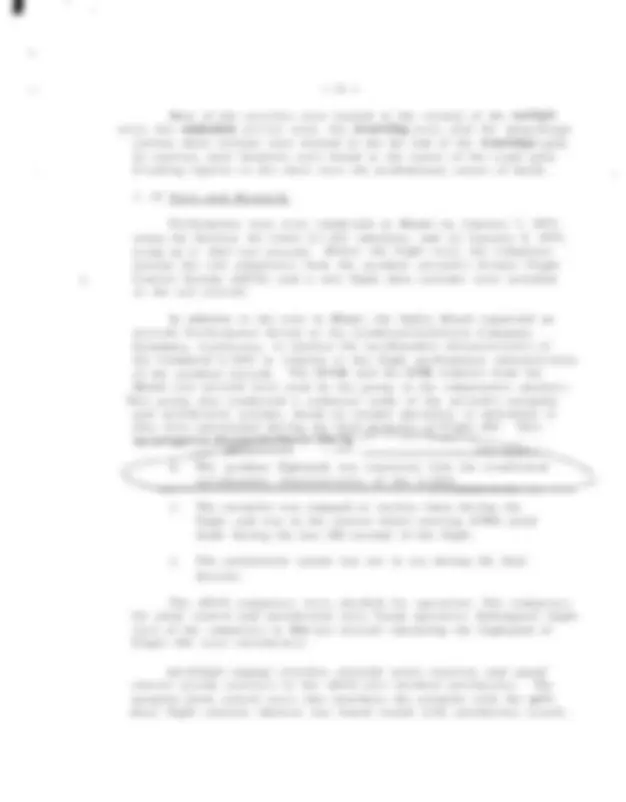
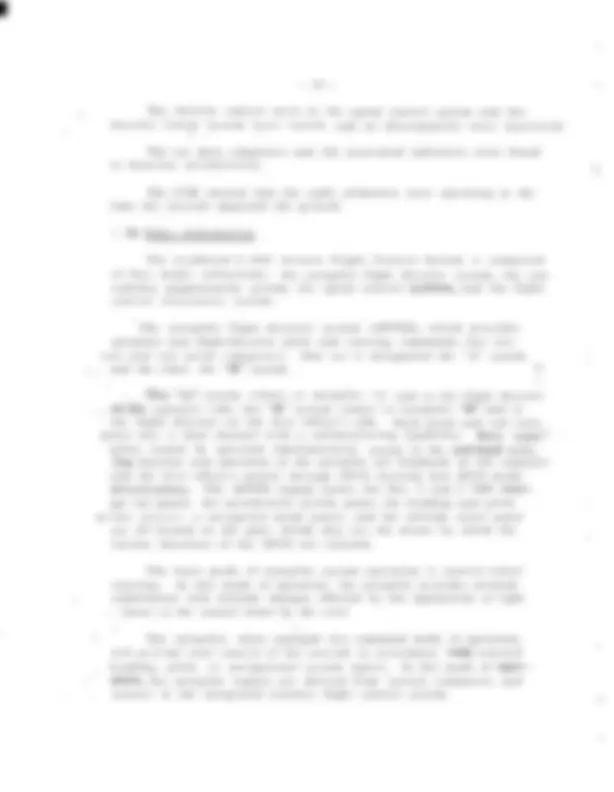
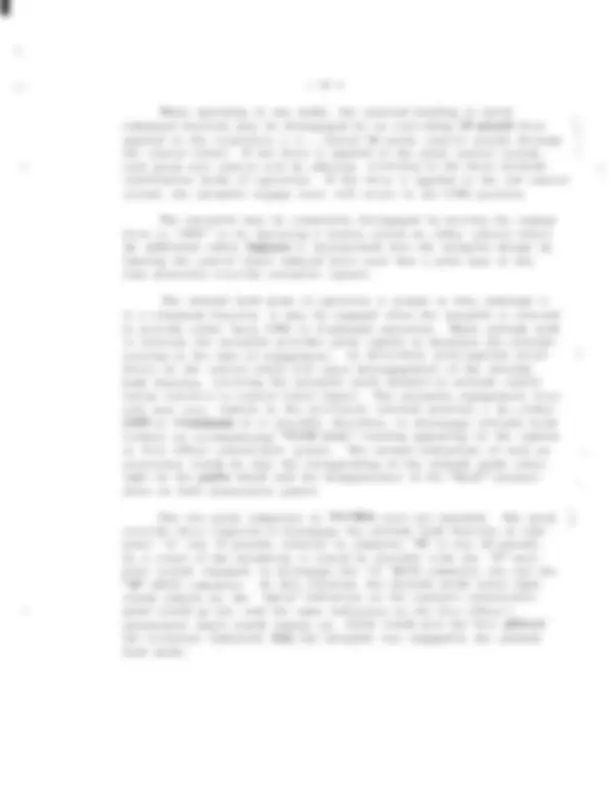
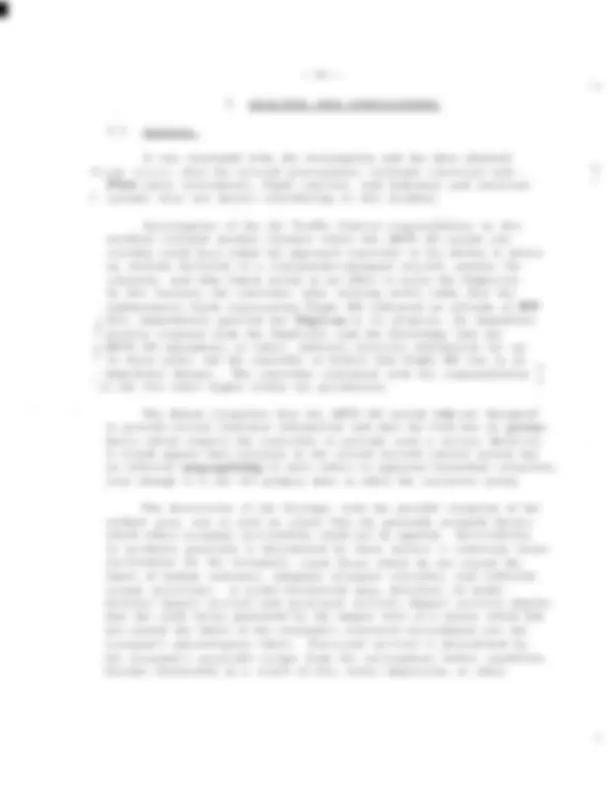
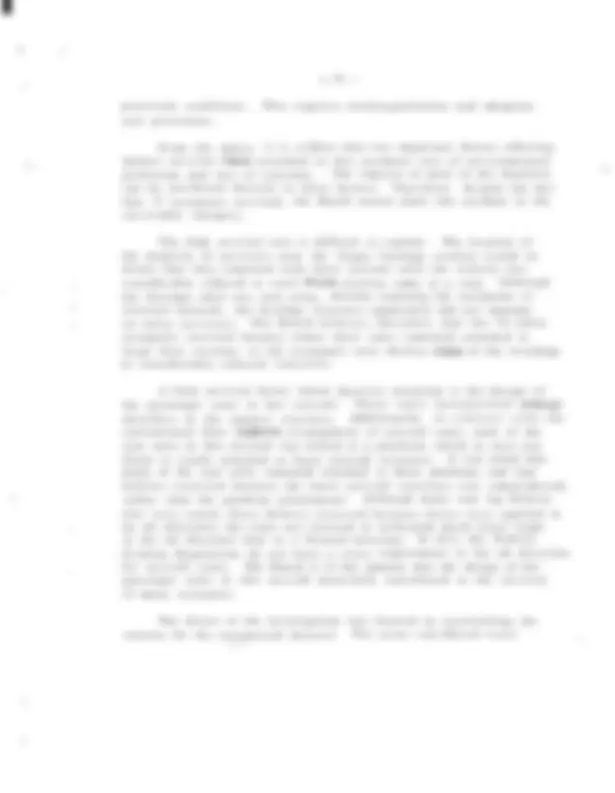
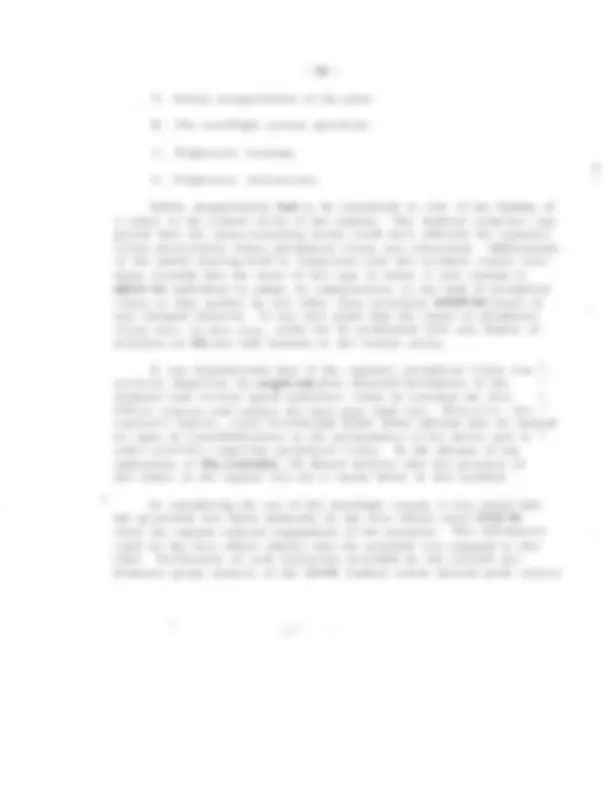
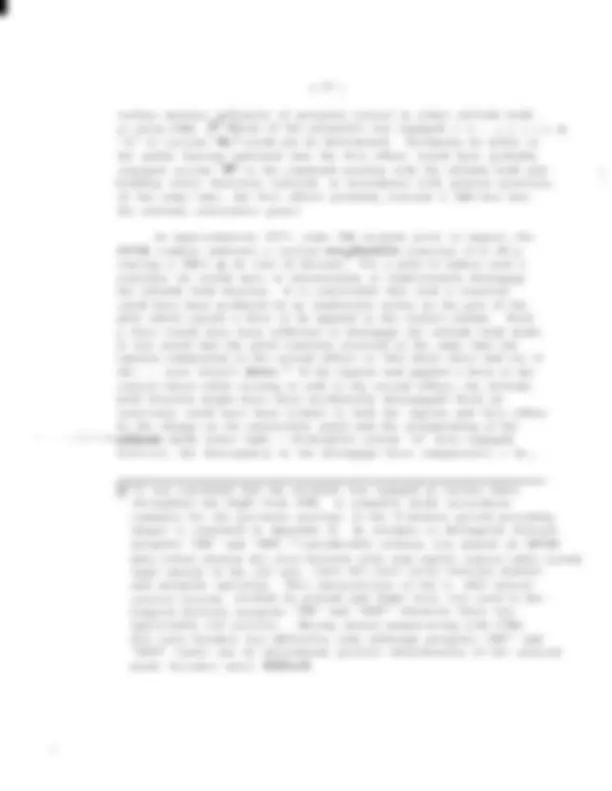
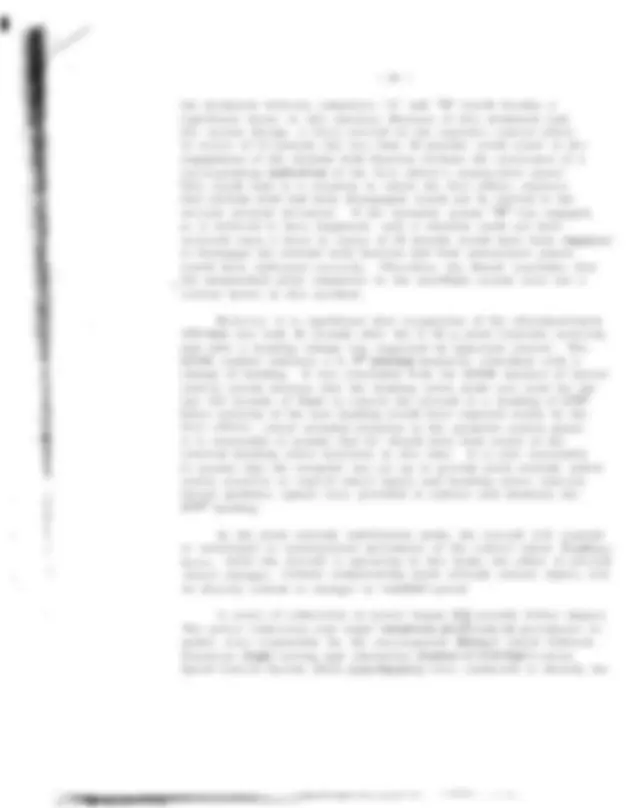
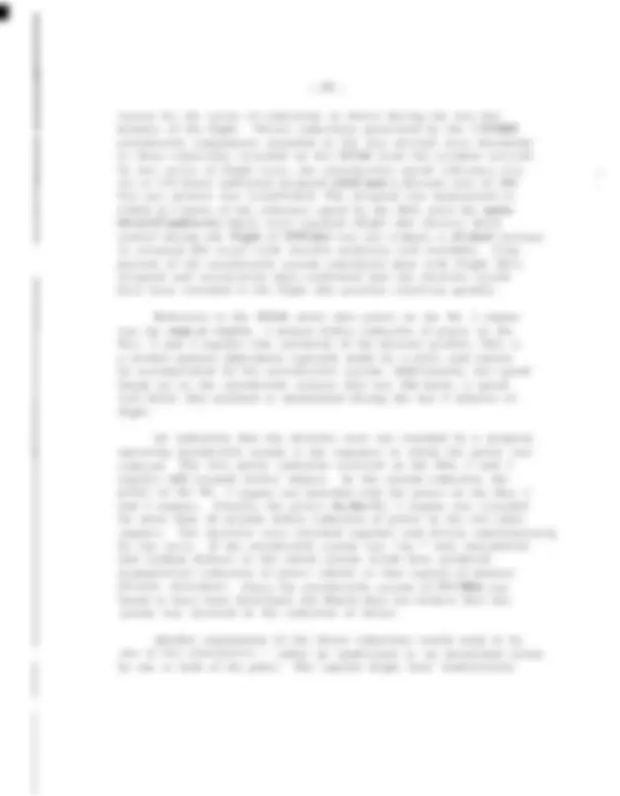
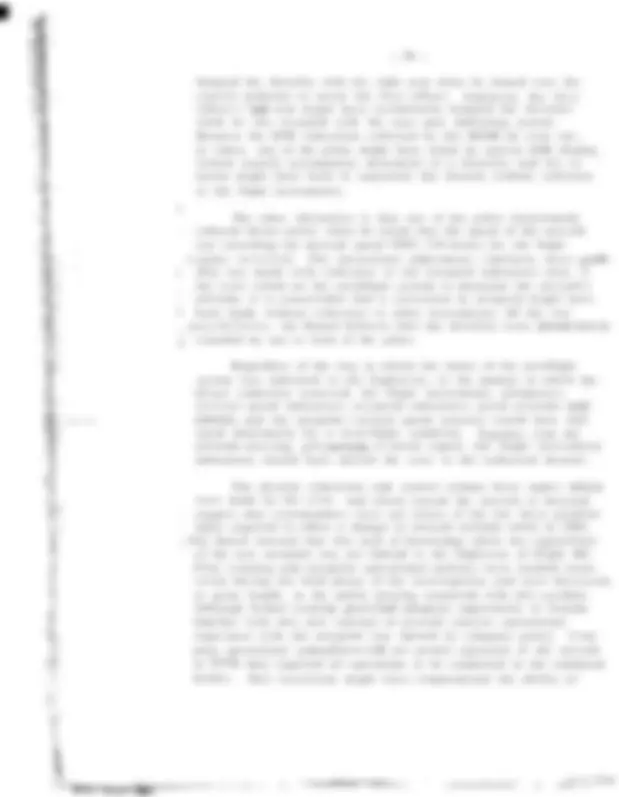
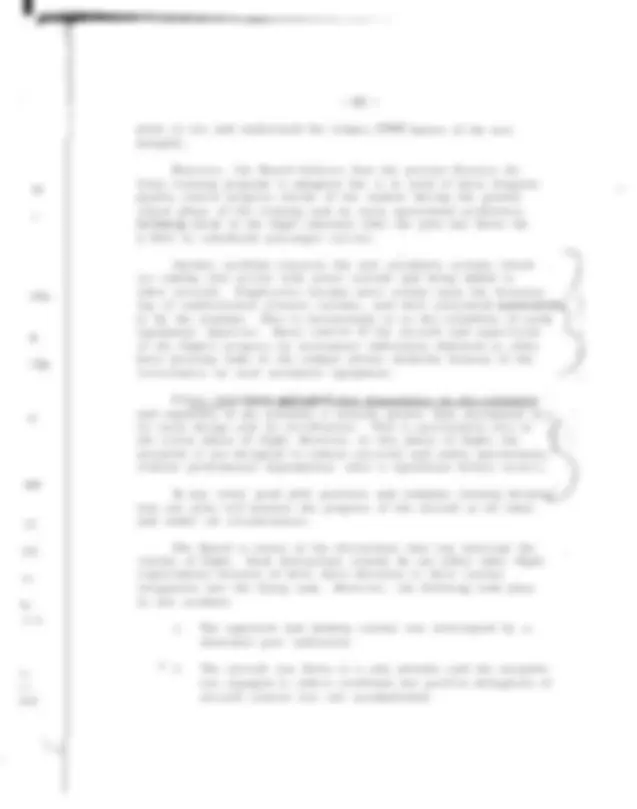
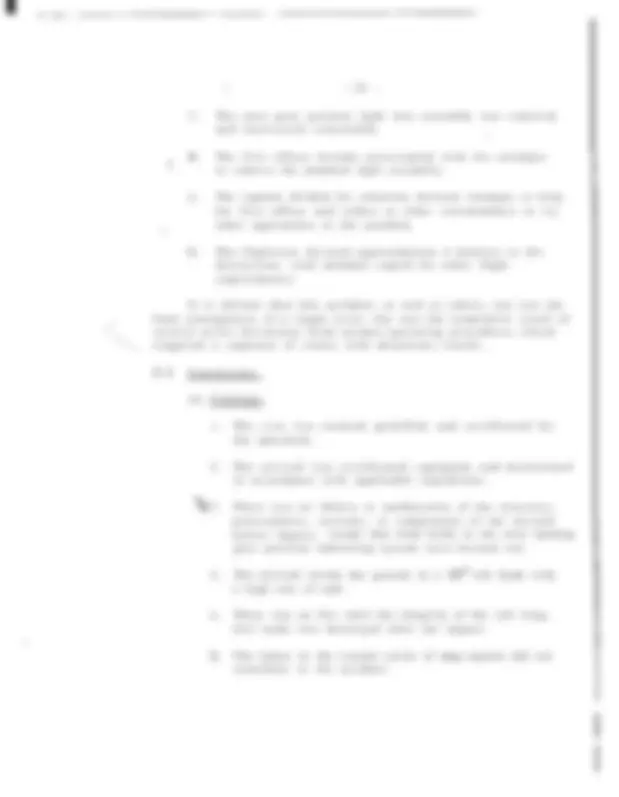
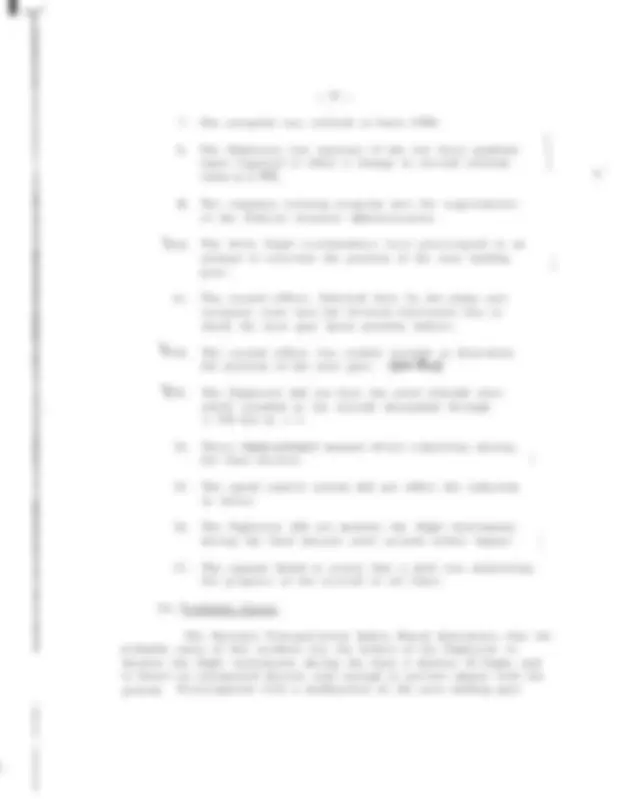
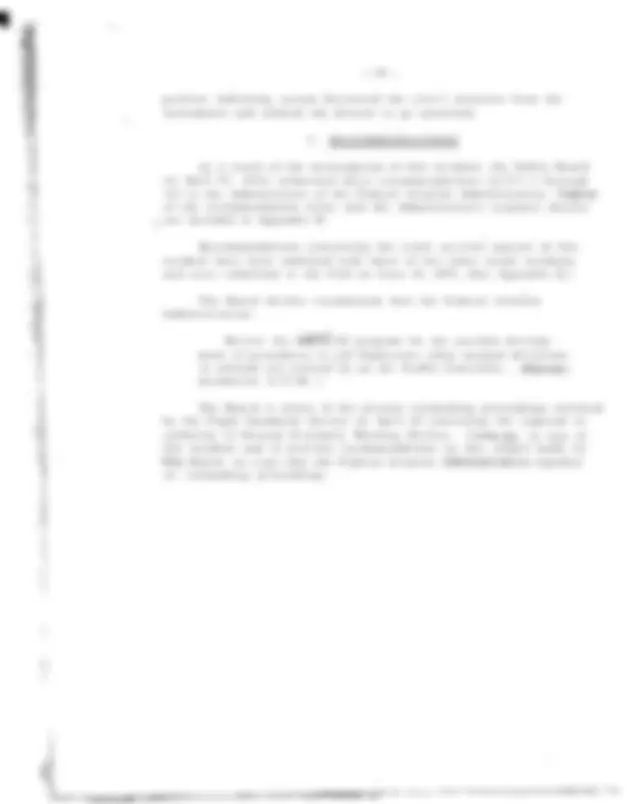
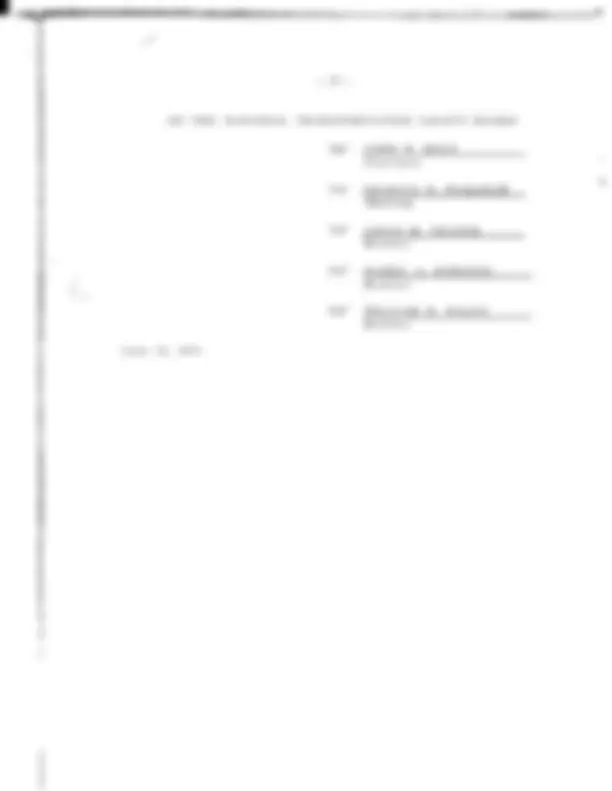
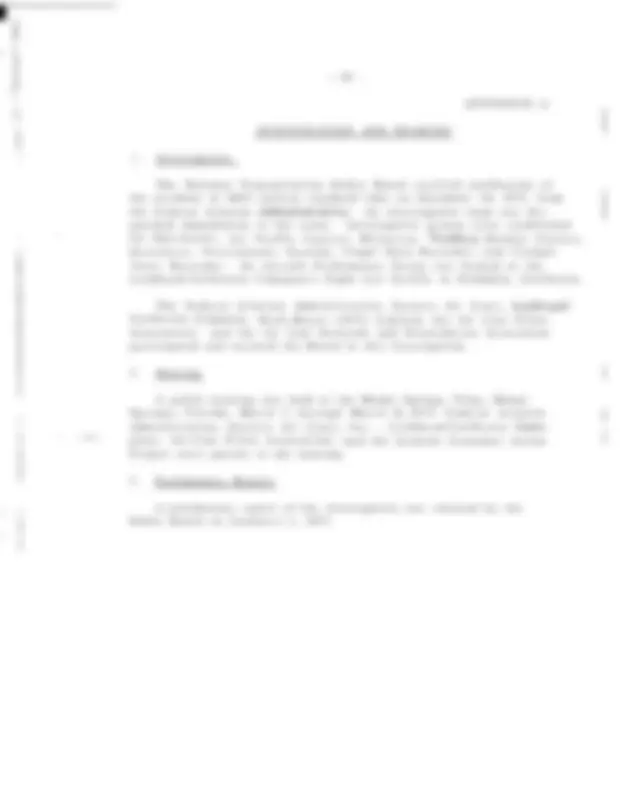
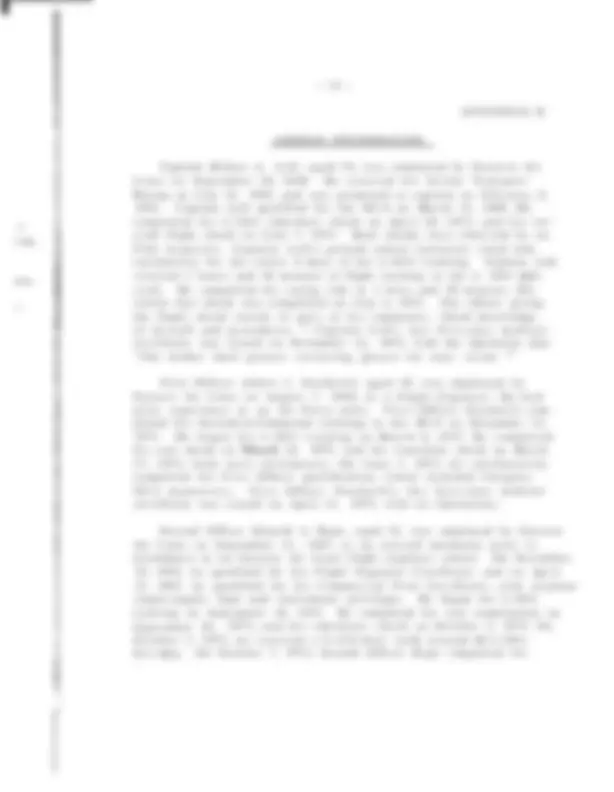
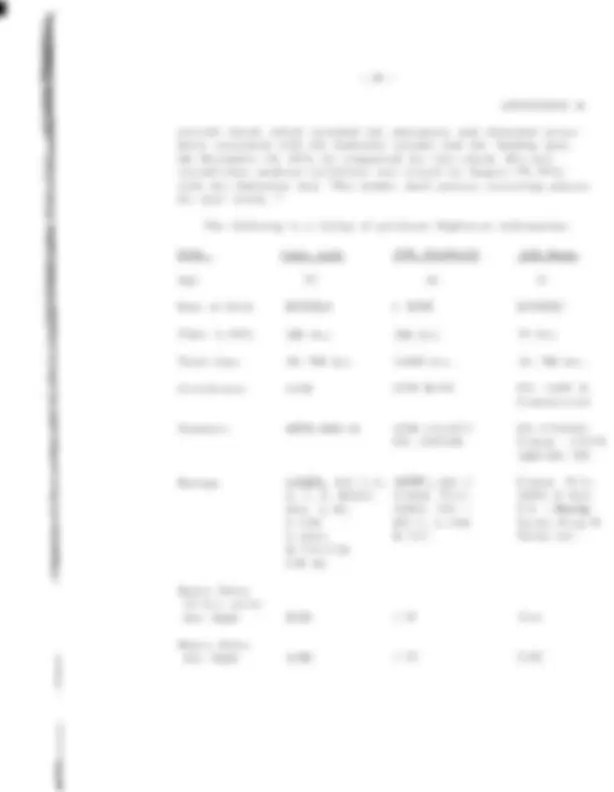
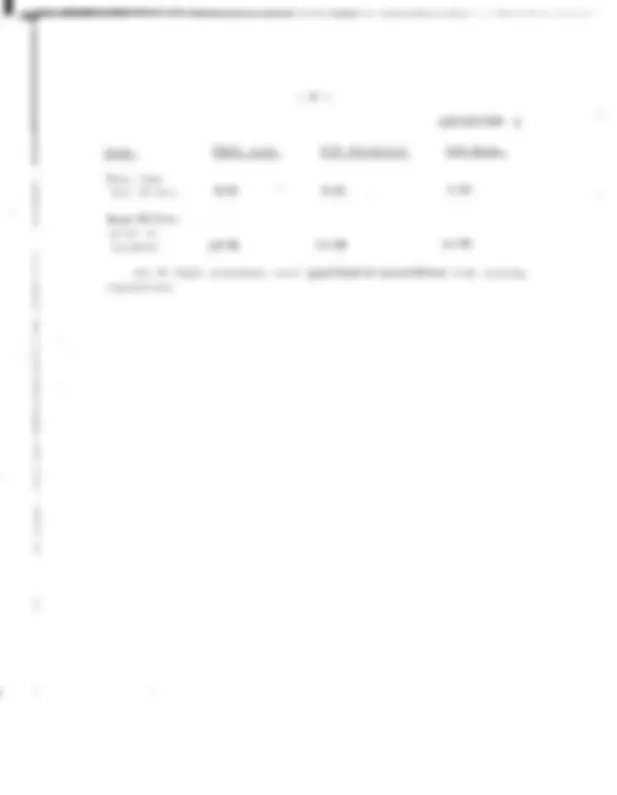
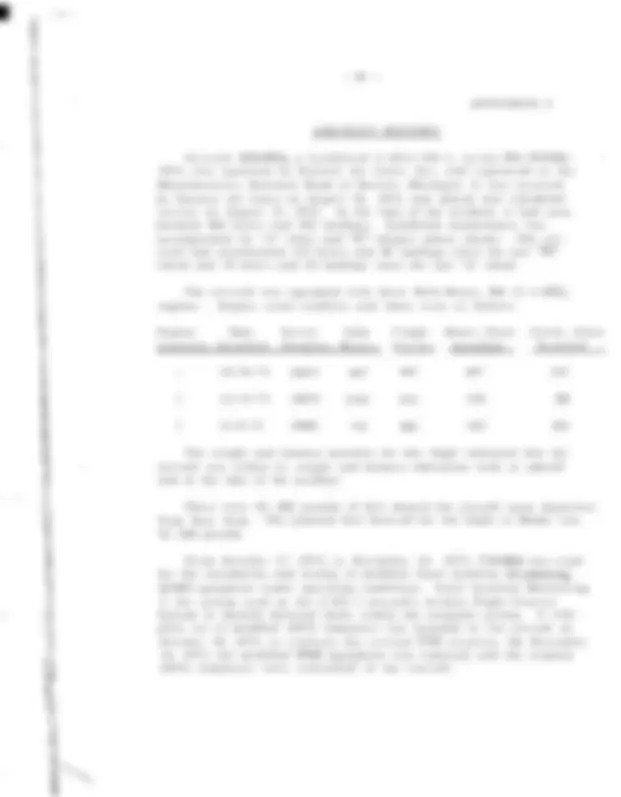
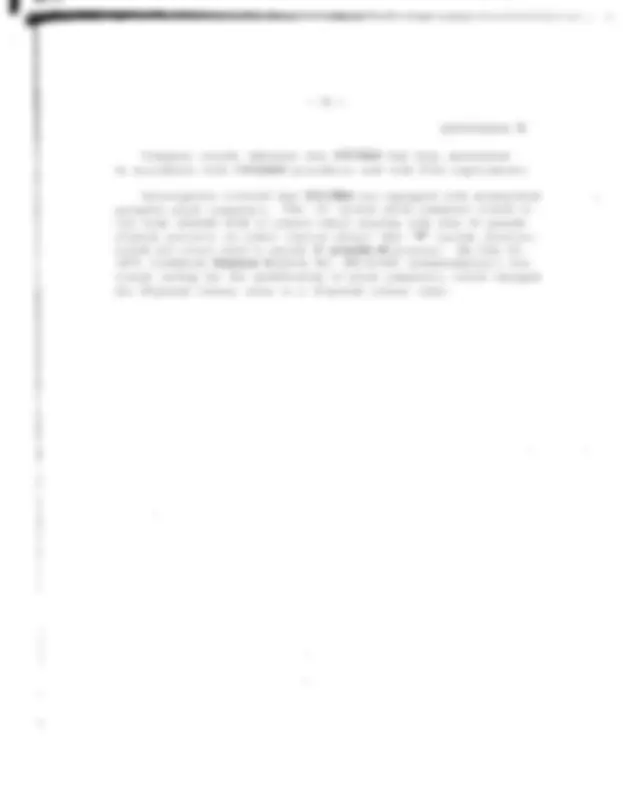
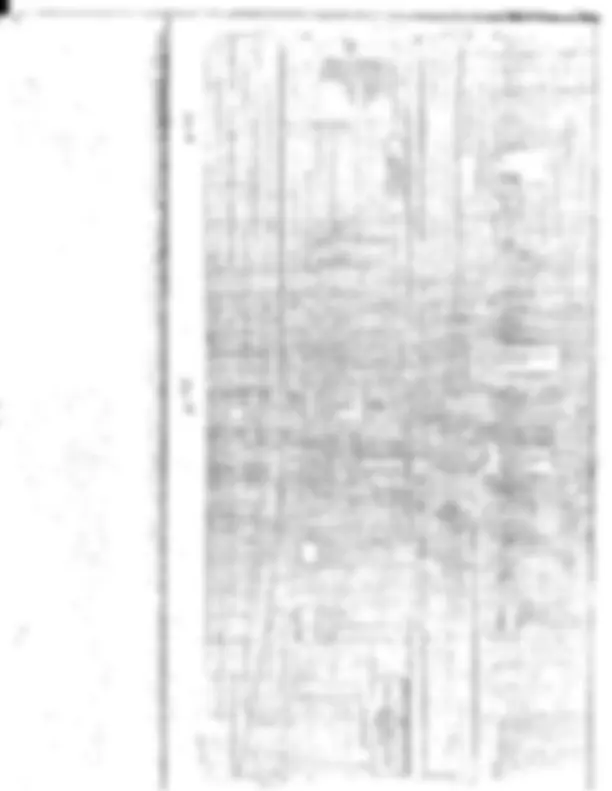
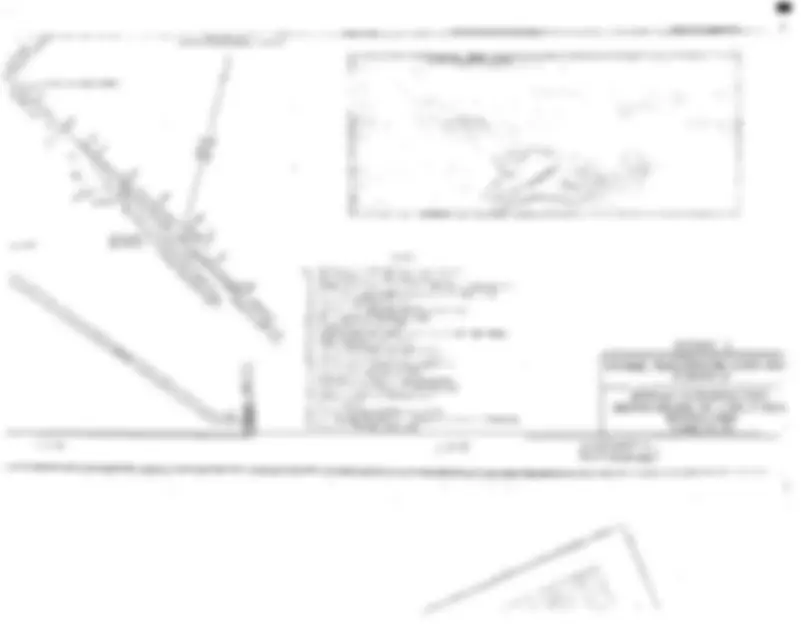
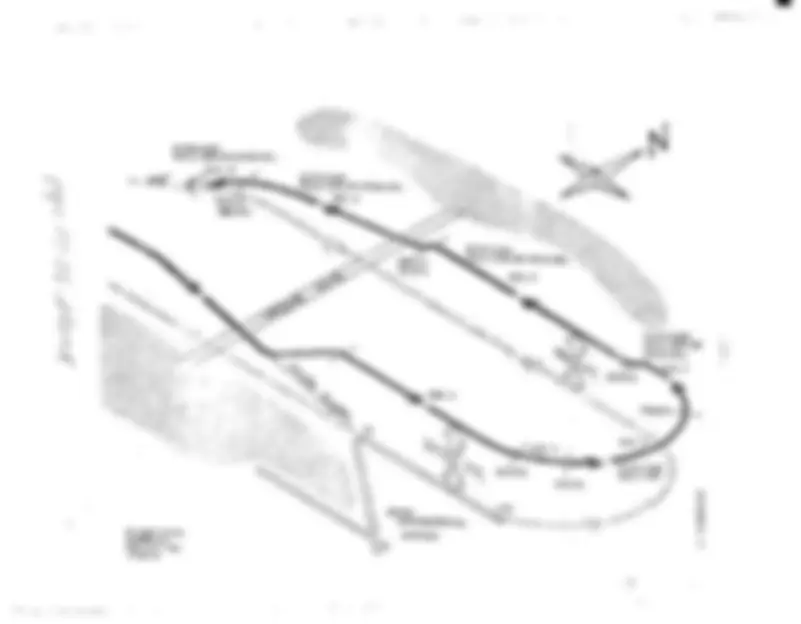
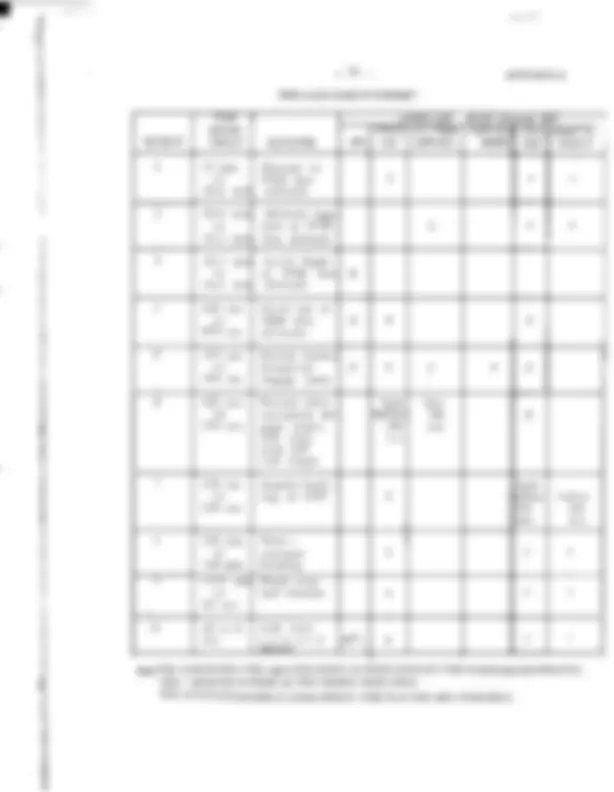
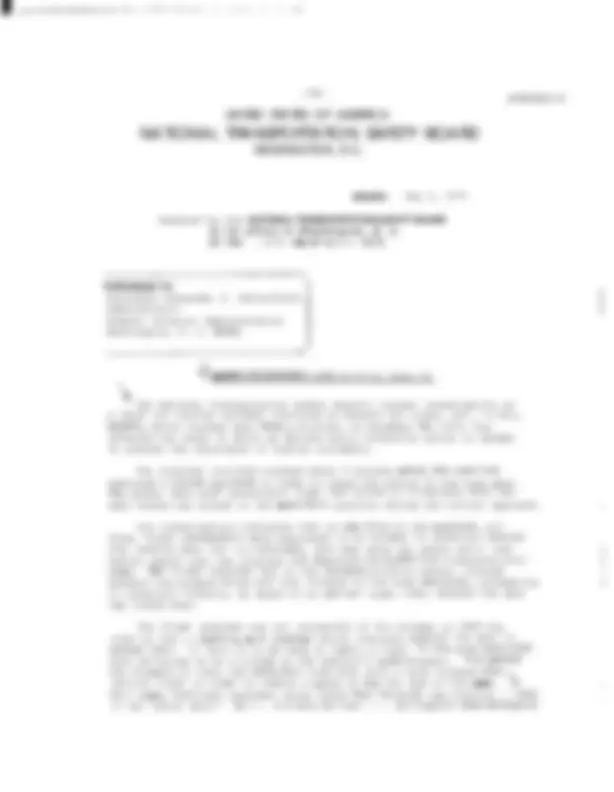
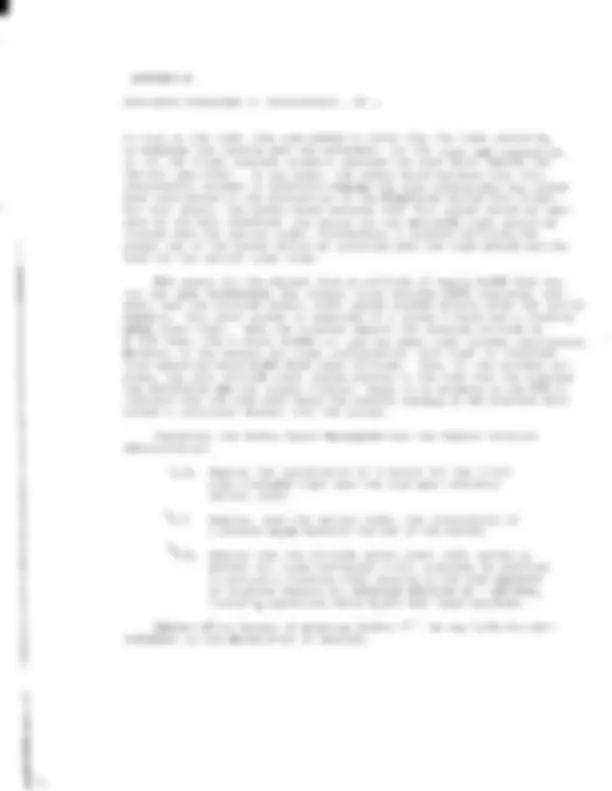
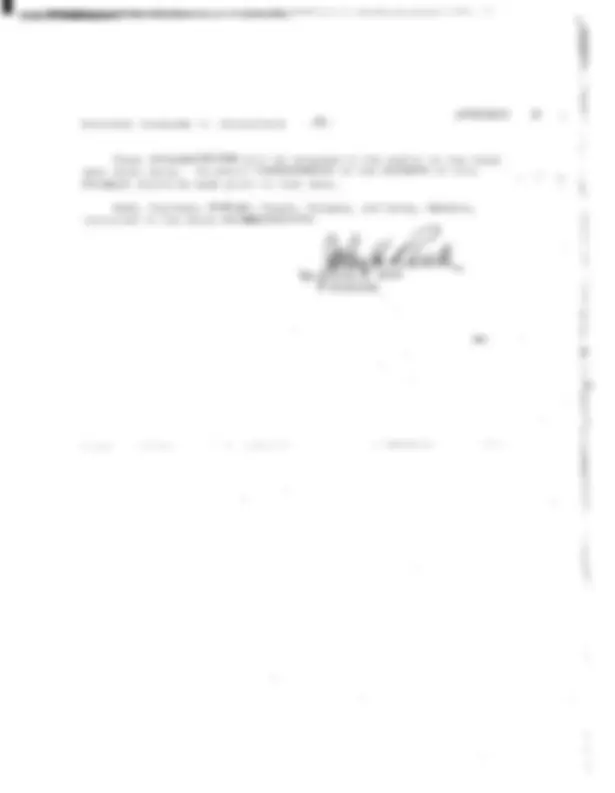
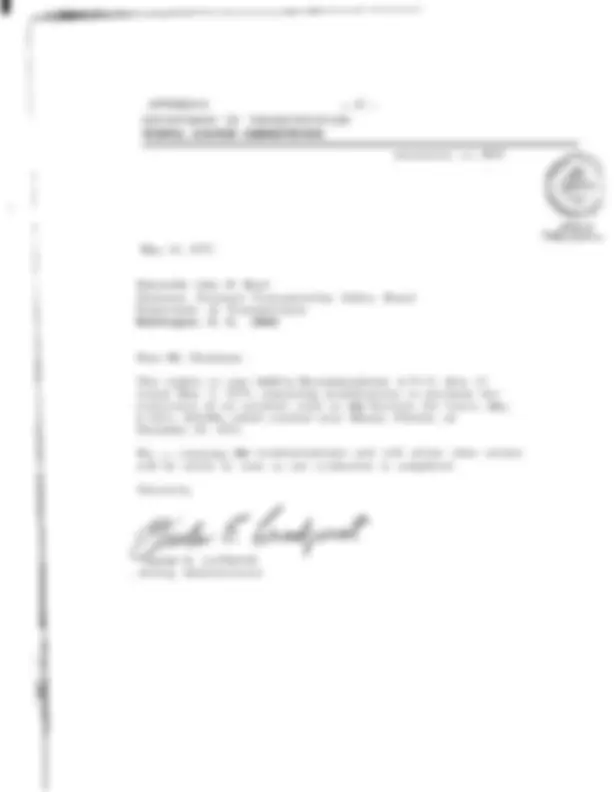
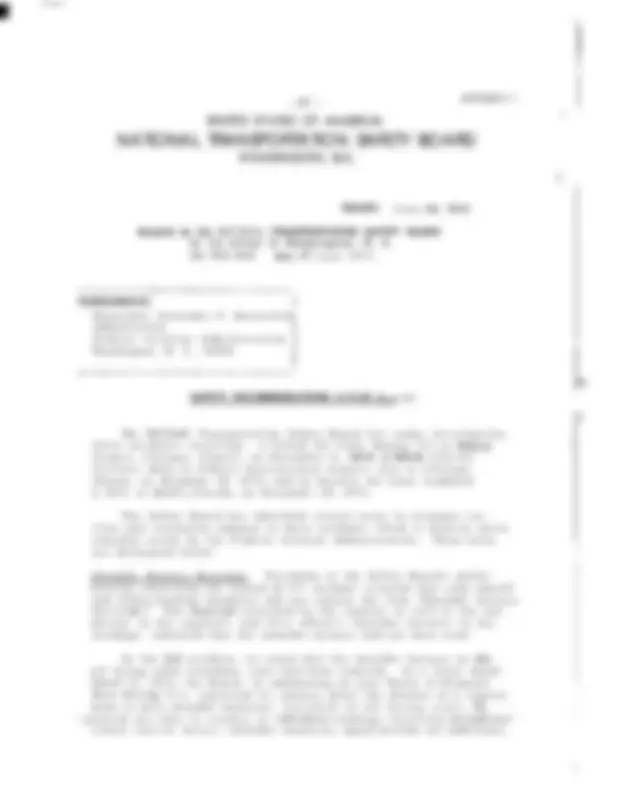
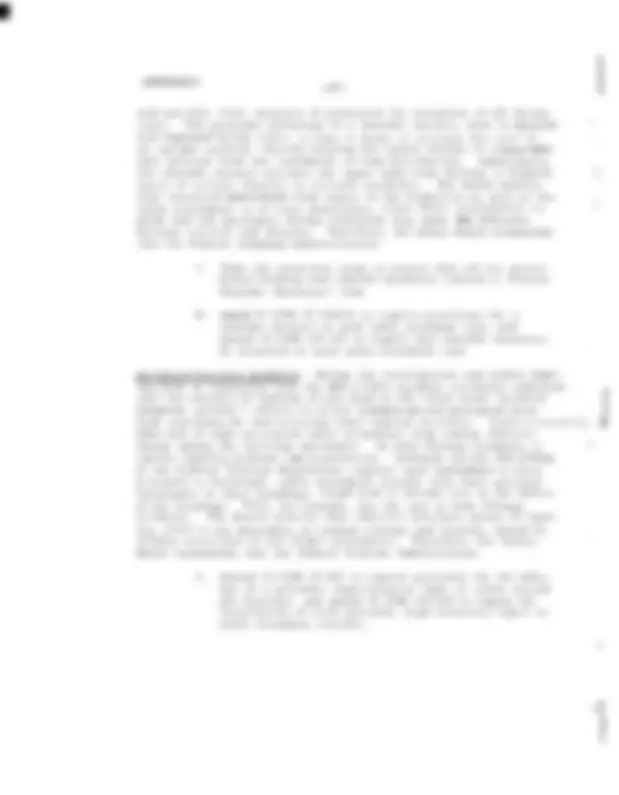
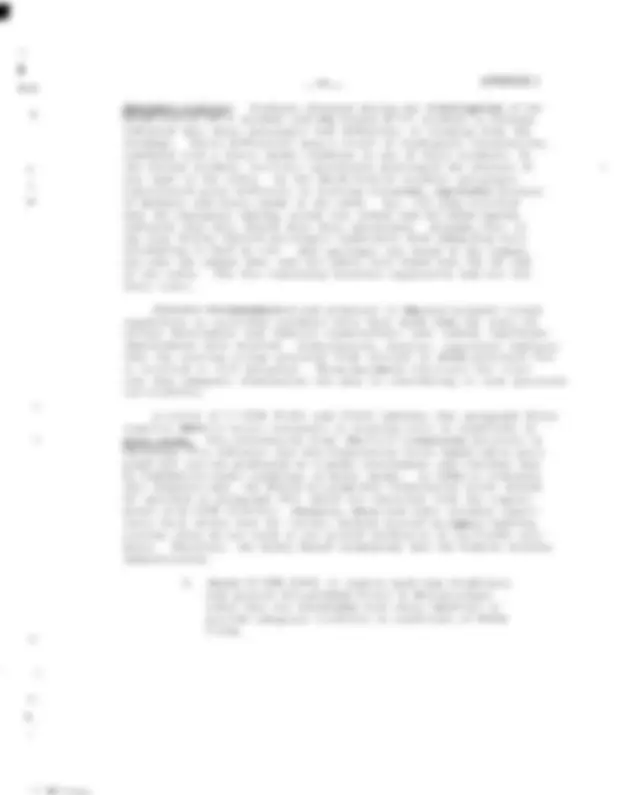
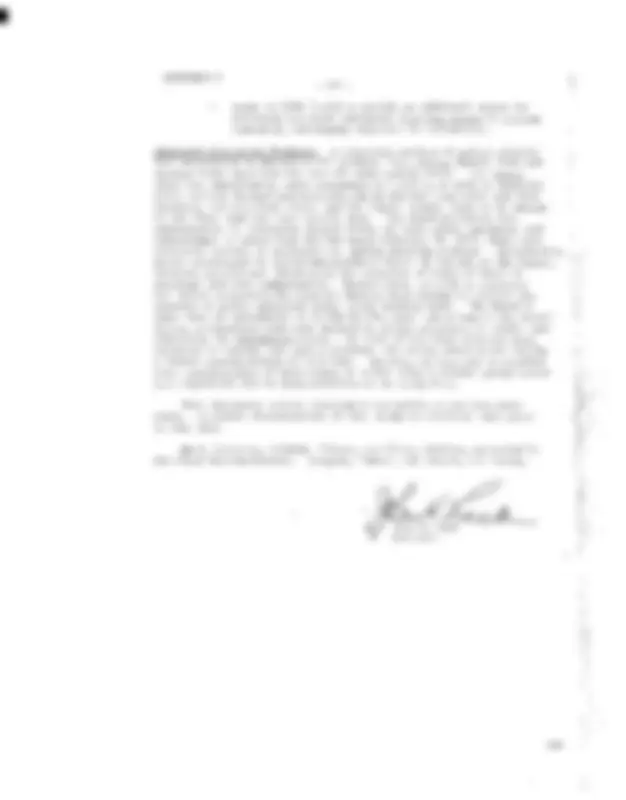
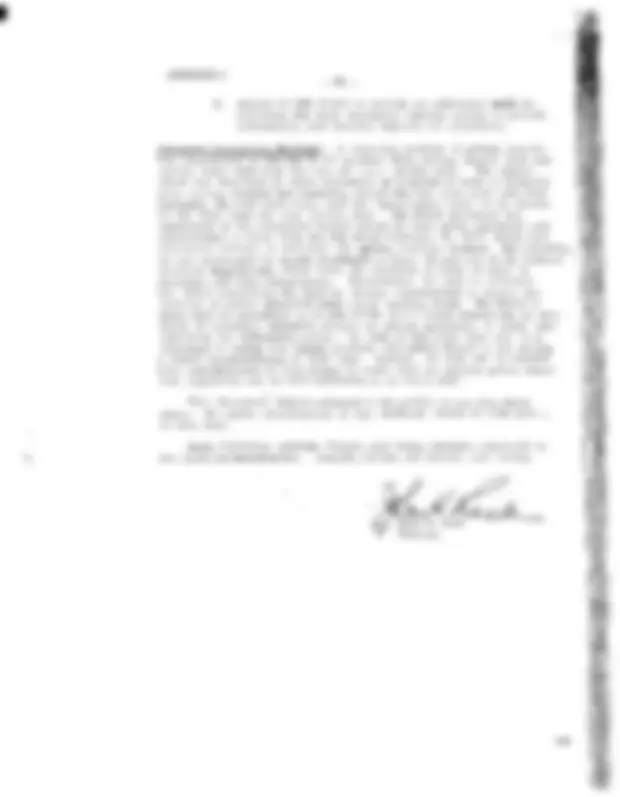


Study with the several resources on Docsity

Earn points by helping other students or get them with a premium plan


Prepare for your exams
Study with the several resources on Docsity

Earn points to download
Earn points by helping other students or get them with a premium plan
Community
Ask the community for help and clear up your study doubts
Discover the best universities in your country according to Docsity users
Free resources
Download our free guides on studying techniques, anxiety management strategies, and thesis advice from Docsity tutors
An excerpt from an Aircraft Accident Report by the National Transportation Safety Board regarding the crash of Eastern Air Lines L-1011 on December 29, 1972. The probable cause of the accident was determined to be the failure of the flight crew to monitor the flight instruments during the final minutes of the flight and prevent an unexpected descent. details about the communication between the flight crew and the air traffic control, the autopilot and autothrottle systems, and the investigation findings.
Typology: Slides
1 / 52

This page cannot be seen from the preview
Don't miss anything!













































II (^) iiw- -___ ... -.----. __^ ^ .^ ..^ --
. (^) “ 8 ..
T
. : :*I’.-. .:.
..’ ,. (^) ,I
.. (^) .., ’ . ’ r ... : ‘. (^) : : :^.^ .’^. ... ; .:^.^ ,. _.^..^ .1. ;.^ : :
-* : _. _. _,.
I. :. :,
: :
...^ ,
.‘. ;:..,.. *:, :
. ‘.
%I.: : (^)..
_~ .- ,
.. : (^) ‘.:.^. ._,. :- .,^ .: . -. I :. /
: L
4:
“’
3
L ---7,2.
, ..^.^ ..’
L-1011, N310EA ; ”^. i DECEMBER 29,
M
.
(^1) ‘. : .- .” .._.. .-&~;*-‘-: _.,. -.. L.^.
.. _. -:
r
--.-. : AIRCRAFT ACCIDENT REPORT
I’
. ”^?^ * ... 3
i-1011, N310EA - ’ MIAMI, FLORIDA .
Page
Synopsis..........................................
ry of the Flight................................
Appendices Appendix A Investigation and Hearing............ Appendix B Airman^ Information^................. Appendix C Aircraft Information............^ .:.^. Appendix D Flight Profile...................... Appendix E Wreckage Distribution Chart........... Appendix F Flightpath Summary.................. Appendix G Mode'^ A&s^ es’sment^ Summary............ 38 Appendix H NTSB Safety Recommendations A - 7 3 - l l t h r u 1 3 (^)..................... 39 Append& I NTSB Safety Recommendations A-73-39 thru 43.....................^43
l ë.
c
.
.I .I .I
^.. *^ I-.
. _ .. ..
i (^). I_.. -_^ ,^ ..’ r i.. ‘.
. _. _. _..
.- .‘.....
... ..^. . (^). .I^ ‘.
I. .._
As a result of the investigation of this accident, the Safety Board’ has made recommendations to the Administrator of the Federal Aviation Administration.
. ; :... ’.
.
.-
. I -?.. r
Eastern Air Lines, Inc., Lockheed^ L-^ 1011,^ N31^ OEA,^ operating^ as Flight 4OJ (EAL 401), was a scheduled passenger flight from the John F.
On December 29, 1972, the flight departed from JFK at 2120 L/with _ 143 passengers and 13 crewmembers on board and was cleared t.o MIA in accordance with an instrument flight rules flight plan.
The flight was uneventful until the approach to .MIA. The landing gear handle was placed in the “down” position during the preparation for landing, and’the green light, which would have‘ indicated to. the flight- crew that the nose landing gear was fully extended and locked, failed to illuminate. The captain recycled the landing gear, but the green light still failed to illuminate. (^) /
At-2334:05, EAL 401 called the lMIA tower and stated, “Ah, towcrfs; this is Eastern, ah, four zero one, it looks like we’re gonna have to c i r c l e ; we don’t have a light on our nose gear yet. ”
\ ,4t 2334:14, the tower advised, “Eastern four oh one heavy, roger,
trol, one twenty eight six. ”
-4t 2334:21, ;he flight acknowledged, “Okay, going up.to two thousand, one twenty eight six. ”
At 2335:09, EAL 401 contacted MIA approach control and reported, “All right, ah, approach control, Eastern four zero one, we’re right over the airport here and climbing to two thousand feet, in fact, we’ve just reached two thousand feet and we’ve got to get a green light on our nose gear. Ii
At 2335:20, approach control acknowledged the flight’s transmission and instructed EAL 401 to maintain 2, 000 feet mean sea level and turn to a heading of 360’ magnetic.. -The ne’w heading was acknowledged by EAL 401 at 2335:28.
r/ All times herein are eastern standard, based on the 24-hour clock.
Shortly after 2341, the second officer raised his head into the cockpit and stated, “I can’t see it, it’s pitch dark and I throw the little light, I get, ah, nothing. ”
The flightcrew and an Eastern Air Lines maintenance specialist who was occupying the forward observer seat then discussed the oper- ation of the nose wheelwell light. After*ward,^ the^ specialist^ went^ into the electronics bay to assist the second officer.
At 2341:40, MIA approach control asked, “Eastern, ah, four oh one how are things comin’ along out there? ”
i
This query was made a few seconds after the MIA controller noted an altitude reading of 900 feet in the EAL 401 alphanumeric data block -on his radar display. The controller testified that he contacted EAL 401 because the flight was nearing the airspace boundary within his jurisdiction.’ He further stated that he had no doubt at that moment f
about the safety of the aircraft. M.omentary deviations inaltitude in- : f o r m a t i o n on the radar display, he^ said,^ are^ not^ uncommon;^ and^ more than one. scan on the display would be required to verify a deviation : requiring controller action.
.: At^ 2341:44,^ EAL.401^ replied^ to^ the^ controller’s^ query^ with,^ “Okay, Y we’d like to turn’ around and come, come back in, Ii^ and at^ 2341:47, approach control granted the request with; “Eastern four oh one turn left heading one eight zero. ” EAL 401 acknowledged and started the turn. (^) - :
A-42:05, the first officer said, “We did something to the altitude. ” The captain’s reply was, “What? ”
At 2342:07, the first officer asked, “We’re.still at two thousand, \I right.^7 ”^ and^ the^ captain^ immediately^ exclaimed,^ “Hey,^ what’s^ happening h’ here?^ ” i >-.^ SC.
At 2342:10, the first of six radio altimeter warning “beep” sounds began; they ceased immediately before the sound of the initial ground impact. _.
. * At^ 2342:12,^ while^ the^ aircraft^ was^ in^ a^ left^ bank^ of^ 28’, it crashed into the Everglades at a point-.lg. 7.statute miles west-northwest of MIA (latitude 25O52’ N., lobgitude 8’0’36’ W.). The aircraft was destroyed by the impact. , (^)..
Local weather at the time of the accidentswas clear, with un- -y restricted^ visibility.^ The accident occurred in darkness, and there was no Moon.
,. .: .. _ __ .^ .^ .^ ,.^ ..^ .-e-----e
Two ground witnesses had observed the aircraft shortly before impact to be at an altitude that appeared low.
Injuries C r e w
Fatal
Nonfatal 2% l’,*
P a s s e n g e r s Other
94 0
67 0
None 0 0
. ..__ +Includes two nonrevenue passengers, one occupying an observer seat in the cockpit and the other seated in the,first-class section of the cabin.
The accident survivors sustained various injuries; the most preva- lent were fractures of the ribs, spine, pelvis, and lower extremities. Fourteen persons had various degrees of burns; Seventeen persons received only minor injuries and did not require hospitalization:
Post-mortem examination of the captain revealed a tumor which emanated from the right side of.-the tentorium in the cranial cavity. The tumor displaced and thinned the adjacent right occipital lobe of the brain. The lesser portion of this meningioma extended downwa’rd into
. -. ._ the. superior-portion of the rightcerebella’r hemisphere. The^ tumor’^ -. measured 4. 3 centimeters laterally, 5. 7 centimeters vertically, and
0
3
centimeters in an anterior-posterior direction. 1 : Damage to Aircraft
The aircraft was destroyed.
Other Damage
None.
-3/ One nonrevenue passenger and one other passenger succumbed to
their injuries more’than 7. days subsequent to the accident. 14 CFK 430, section 430. 2, riquires’that these deaths be classified herein (^). 2s “nonfatal. ”
, ,
No difficulties with communications between the flight and the air traffic control facilities were reported.
-. Not^ involved.
N31 OEA was equipped with a Lockheed Aircraft Service Co. , Model. 209, expandable digital flight data recorder system (DFDR), serial No. 105. This is a new type of recorder which has the capability to record numerous performance parameters on l/4-inch magnetic tape. Recorded data are retrieved and printed out. In this case, 62
parameters provided the investigators a comprehensive and detailed history of flight. In addition to the normal description of the airspeed, altitude, heading, and vertical a.cceleration of the aircraft, availabiiity of additional data relating to engine thrust, control surface position, roll angle, pitch attitude, angle of attack, etc., provided the basis for a comprehensive aerodynamic ‘evaluation and the basis for the analysis of theautopilot and autothrottle systems.
The aircraft was also equipped with a Fairchild Ivbdel A- 100 Cockpit Voice Recorder (CVR), serial NO. 3125. The CVR tape was recovered intact, and a transcription was made of the voices and sounds commending at the time of the crew’s initial call to the MIA Tower. (See Appendix’D for details. )
\I The terrain in the impact area was flat marshland, covered with soft ‘mud under 6 to 12 inches of water. The elevation at the accident site was approximately 8 feet above sea level.
The left outer wing structure impacted the ground first; the No. 1 engine,. and^ then^ the^ left^ main^ landing^ gear,^ followed^ immediately.^ The aircraft disintegrated, scattering yreckage over an area approximately 1,600 feet long and 300 feet-wide. No^ complete^ circumferential^ c^ ros^ s^ - section remained of the passenger compartment of the fuselage, which was broken into four main sections and numerous small pieces. The entire left wing and left stabilizer were demolished. No evidence of in- -
. flight^ structural^ failure,^ fire,^ or^ explosion^ was^ found...
The nature of the breakup precluded determination, by physical means, of the integrity of the primary flight control system before impact. The primary flight control positions were recorded, however, by the Dl?.DR. These^ data^ show^ that^ the^ control^ columns^ were^ in^ an aircraft noseup position when the crash occurred. The DFDR record depicted the spoiler positions as retracted; the three intact spoilers on the remains of the right wing were found, by inspection, to be retracted. The wing flap lever in the cockpit was set at 18O flap extension, and the extension of the inboard jackscrew on the inboard section of the right wing flap corresponded with that setting. The leading edge slat sections on the intact portion of the right wing were found fully extended. The wing flap and leading edge slat positions agreed with the DFDR record.
The landing gear lever was in the geardown position. The right main landing ‘gear, which^ remained^ in^ place,^ was^ down^ and^ locked. The left main landing gear and the nose landing gear, along with portions of their attach structure, were separated from the airplane and were ext ens ive ly damaged. The nose eear down-and-locked visual indicitfor s-ight and the nose wheelwell servic..e.light.~assemb.Lyereothinplace and- - - - operative. The nose gear warning light lens assembly was jammed in a position that was 90° clockwise to and protruding a quarter of an inch from its normal position. Both bulbs in the ILnifWprprntit.
. (^) Except for the altitude portion of the first officer’s Air Data Computer (ADc), both ADC’s and the Pitot static instruments operated. satisfactorily during functional testing. The first officer’s ADC sus- tained impact damage, and^ the^ altitude^ sensing^ portion^ of^ the^ unit^ could not be tested. The captain’s ADC altitude, true airspeed, and calibrated airspeed validity flags were monitored by the DFDR. NO f a i l u r e s w e r e recorded.
The captain’s and first officer’s altimeters both indicated approxi- mately 75 feet below sea level. The readings on the captain’s airspeed and vertical speed indicators were 198 knots and 3, 010 feet per minute down. The readings on the first officer’s airspeed and vertical speed indicators were 197 knots and 2,950 feet per minute down. The^ captain’s radio altimeter was set for a decision height of 30 feet, whereas the first officer’s radio altimeter was set for 5i feet. The^ radio^ altimeter^ aural tone, which^ sounds^ during^ descent^ at^50 feet^ above^ the^ selected^ decision height, was recorded on the CVR‘ 2 seconds before impact.
Functional tests of the captain’s and first officer’s attitude director indicators revealed that both units were capable of satisfactory operation.
Most of the survivors were located in the vicinity of the cockp.it area, the midcabin service area, the overwing area, and the empennage section; these sections were located at the far end of the wreckzge path. In contrast, most fatalities were found in the center of the crash path. Crushing injuries to the chest were the predominant causes of death.
i
Performance tests were conducted at Miami on January 7, 1973, using the Eastern Air Lines L-l 011 simulator, and on January 9, 1973, using an L- 1011 test aircraft. Before^ the^ flight^ tests,^ the^ computers (except the roll computers) from the accident aircraft’s Avionic Flight Control System (AFCS), and a new flight data recorder were installed in the test aircraft.
In addition to the tests in Miami, the Safety Board organized an Aircraft Performance Group at the Lockheed-California Company, Palmdale, California, to^ analyze^ the^ aerodynamic^ characteristics^ of the Lockheed L-1011 in relation to the flight performance characteristics of the accident aircraft. The^ DFDR^ and^ the^ CVR^ readouts^ from^ the Miami test aircraft were used by the group in the comparative analysis., This group also conducted a collateral study of the aircraft’s autopilot and autothrottle systems, based on normal operation, to determine if they were operational during the final moments of Flight 401. This ..-.-..
The AFCS computers were checked for operation. The computers for pitch control and autothrottle were found operative. Subsequent flight tests of the computers in th.e test aircraft simulating the flightpath of Flight 401 were satisfactory. .’
Autoflight engage switches, altitude select controls, and speed control system selectors in the AFCS also checked satisfactory. The autopilot pitch control servo that interfaces the autopilot with the pri- mary flight controls likewise was bench tested with satisfactory results.
:_ :. The^ throttle^ control^ servo^ in^ the throttle clutch system were tested,
speed control system and the
-_ (^) \ : and^ no^ discrepancies^ were^ uncovered.
The air data computers and the associated indicators were found to function satisfactorily.
The CVR showed that the radio altimeters were operating at the time the aircraft impacted the ground. ’
The Lockheed L-1011 Avionic Flight Control System is composed of four major subsystems: (^) the autopilot flight director system, the yaw stability augmentation system, the speed control syst.em, and the flight control electronics system.
’ The autopilot flight director system (APFDS), which provides autopilot and flight-director pitch and steering commands, has two roll and two pitch computers. One set is designated the “A” system
.. -iz\I? ... and^ the^ other.^ the^ “B” system.^ : ,_ -. $ : - ~The^ .“A”^ system^ relates^ to^ autopilot on.the captain’s side; the ”
“A” and to the flight director
.. T B” system relates to autopilot “B” and to the flight director on the first officer’s side. (^) Each pitch and roll corn- ‘puter has- a dual channel with a self-monitoring capability. .Both^ autoiz’^ - pilots cannot be operated simultaneously, (^) except in the autoland mode. Ihe function and operation of the autopilot are displayed on the captain’s and the first officer’s panels through AFCS warning and AFCS mode annunicators. The APFDS engage panel, the Nos. 1 and 2 VHF navi- gat ion panels, the autothrottle system panel, the heading and pitch m o d e p a n e l , a navigation mode panel, and the altitude select panel are all located on the glare shield; they are the means by which the various functions of the AFCS are selected.
(^9) :-
The basic mode of autopilot system operation is control wheel steering, In this mode of operation, the autopilot provides attitude